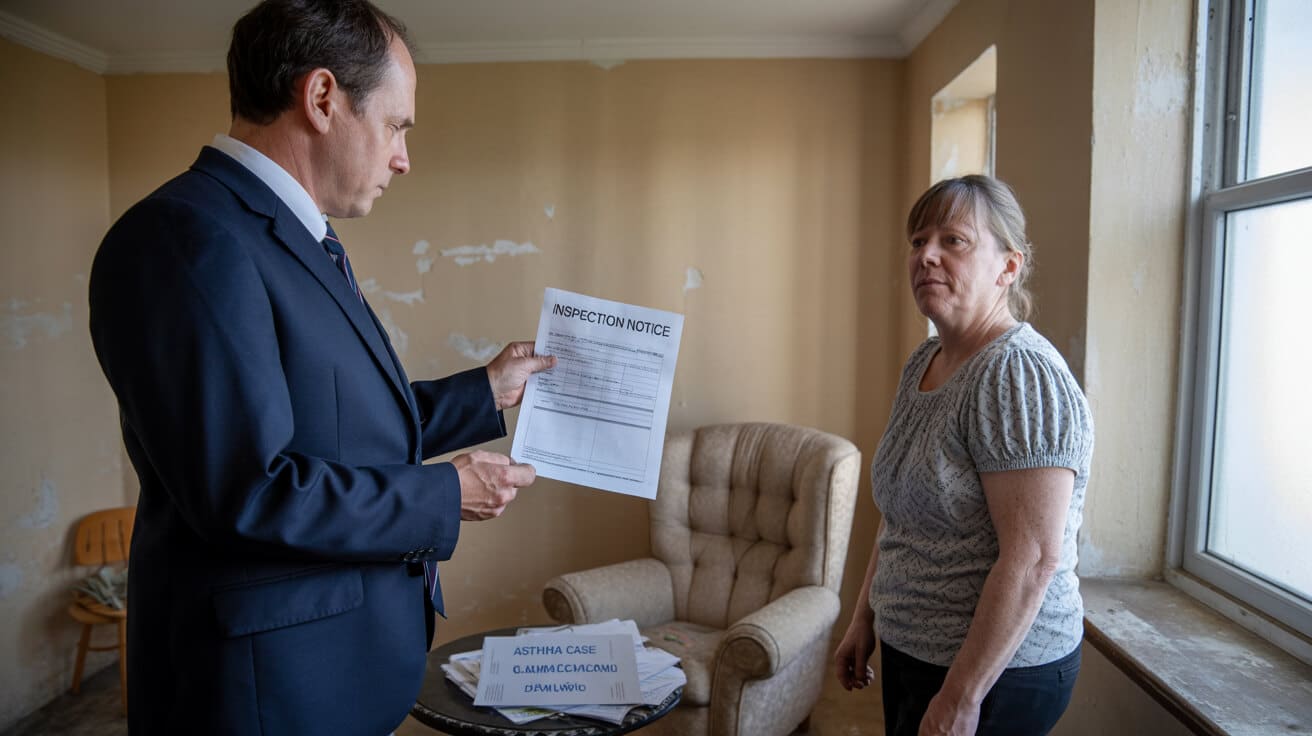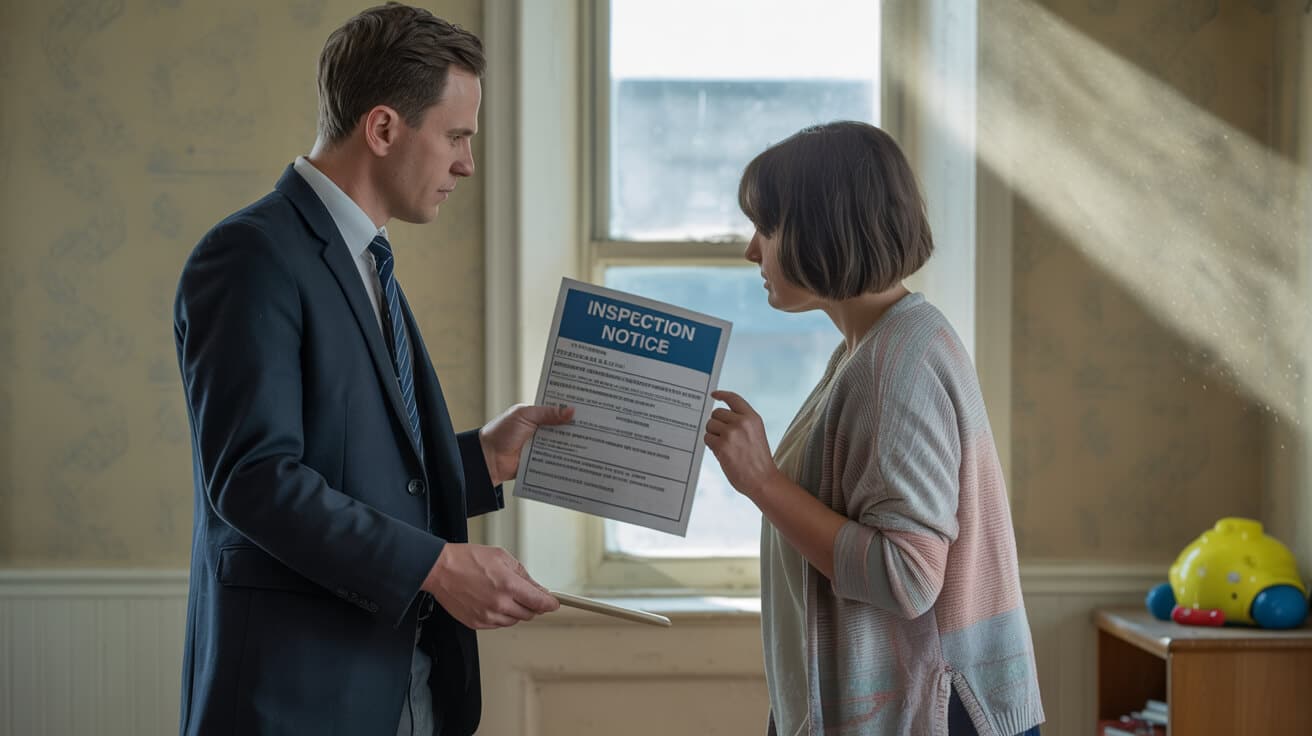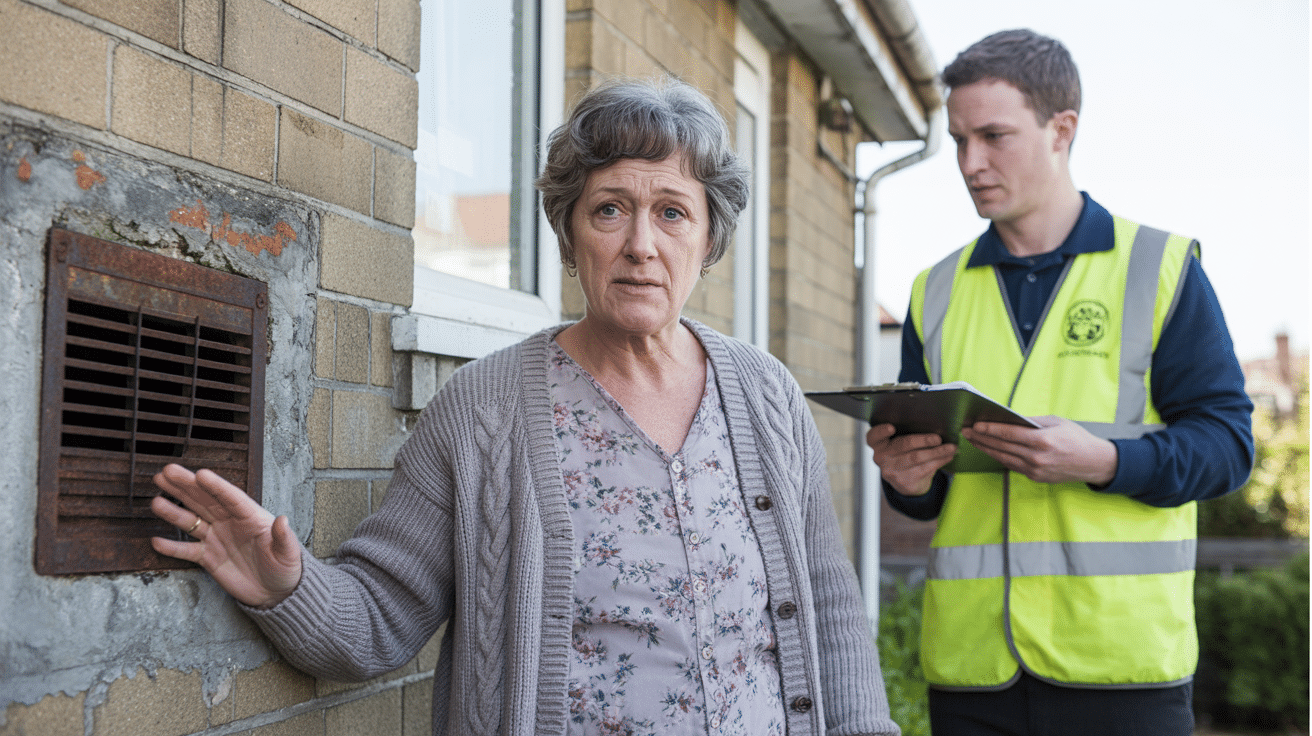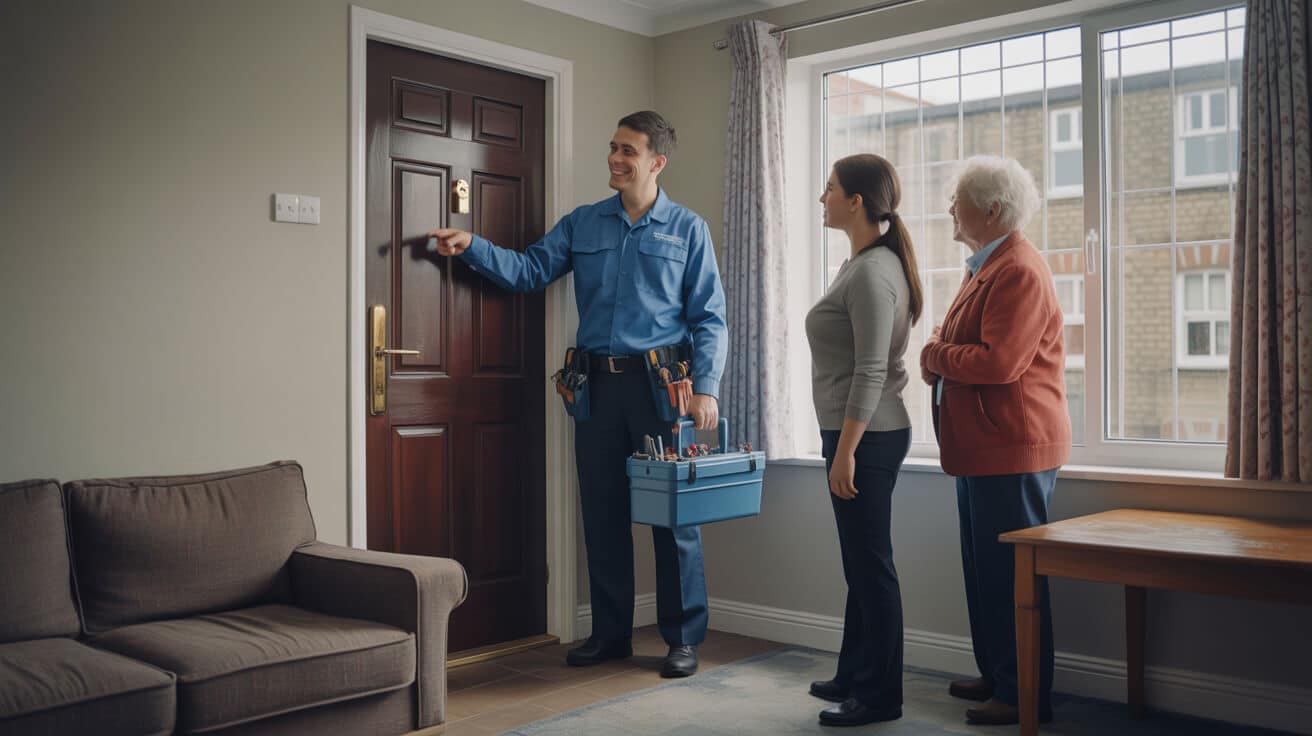 A Guide To Tenant Communication For Scheduled Maintenance
A Guide To Tenant Communication For Scheduled Maintenance

What Sets the Gold Standard for Tenant Communication During Scheduled Maintenance?
routine maintenance can spell the difference between a year of smooth tenancies and months of headaches that drain everyone’s patience and time. The most successful property owners, letting agents, and building managers—those who rarely face shut-out doors, angry tenant calls, or negative Google reviews—are the ones who treat communication not as a “tick the box” task, but as the foundation of trust.
“Professional landlords don’t go viral—because their tenants are never left guessing what’s next.”
True gold-standard communication does more than keep you inside the legal lines. UK law is clear: 24 hours’ written notice is the legal minimum (Landlord & Tenant Act 1985, Section 11). But the leaders in property management win loyalty and reduce disputes by showing clarity, humanity, and promptness in every exchange. For All Services 4U, and for industry best practice, that means every notice, update, or follow-up is accurate, access-conscious, and tailored to prevent confusion before it can even start.
What’s at stake if you fall short? Tenants become suspicious. Scheduled works turn into access disputes. Emergencies slow down, and reputational damage grinds your value. Get this right and every repair, inspection, or upgrade flows with less drama, legal risk, and cost.
Why Is Trust the Ultimate Outcome?
Every maintenance message—no matter how procedural—signals your respect for tenants’ lives and privacy. Pile up a few bad signals, and tenants stop cooperating—even on urgent repairs. Aim for clarity, advance warning, and a feedback path every time, and tenants shift from seeing you as a gatecrasher to a partner in their home’s upkeep.
How Can Written Notices Build Trust When Scheduling Maintenance?

The written notice is your handshake before you step through the door. It isn’t just about legal compliance; it’s a clear marker of transparency, professionalism, and respect for the tenant’s space.
What Information Must Be in a Maintenance Notice?
The UK’s legal baseline is simple but non-negotiable:
- Who is attending: Full name, role, company (“Hector Gauge, All Services 4U technician”), including relevant certifications.
- Nature of the work: Replace “general maintenance” with specifics—“boiler inspection,” “window lock replacement,” “mould diagnosis.”
- When: A precise date and time slot (not vague windows). Allow alternative time proposals wherever possible.
- Where: Exact rooms or areas affected.
- Statutory reference: Quote Section 11, Landlord & Tenant Act 1985, to anchor your authority without sounding bureaucratic.
“Specific, timely notices create calm—generic ones breed worry and push-back.”
What Turns a Legal Notice Into a Trust Builder?
Meeting requirements is the baseline. Exceeding them, with empathy and a personal touch, is how you win trust:
- Plain English—drop jargon, skip “works schedule as agreed,” say “we’re changing your kitchen tap.”
- Direct contacts—let tenants reply to a named person, not a faceless office.
- Confirmation channels—give SMS, app, or email reply instructions.
- Respect their time—invite rescheduling if necessary.
This signals: we see you, we respect that your home is your home, and we want to inconvenience you as little as possible.
Will This Really Affect Disputes and Cooperation?
Yes. Industry data shows that two-way, transparent communication halves dispute rates and doubles the number of tenants who report issues early—reducing urgent callouts and expensive damage (Shelter, 2022).
How Do You Make Your Maintenance Plans and Impacts Crystal Clear?

Ambiguity is the enemy of cooperation. When tenants know what work will occur, who’s coming, how long it might take, and what (if anything) they need to change in their routine, their anxiety drops and collaboration rises.
The Clarity Blueprint
- Describe in relatable terms: “We’ll change your living room radiator between 9:30 and 11:30; there may be noise for up to 30 minutes. The system will be off during this time.”
- State credentials openly: Include ID and registration for technicians dealing with gas, electrics, or vulnerable tenants.
- Define the space: List which rooms or common areas will be entered.
- Give a clear timeline: For significant works (e.g., bathroom refit, external painting), explain the expected schedule and likely impact, avoiding “works may take 1–5 days.”
- For large-scale or Section 20 works: Provide 30+ days advance notice, summary of works, and how feedback can be given.
“Detailed notices aren’t about overload—they shrink misunderstanding and prove you value tenants’ privacy and time.”
If works might affect vulnerable tenants, those working from home, or require discontinued services (e.g., water off), call attention to these issues up front, offering adjustments wherever practical.
Can Written Notice Ever Replace Tenant Permission?

No. By law and common sense, a written notice—however perfect—never overrides the tenant’s right to withhold consent except during emergencies. What matters most is that you prove you gave notice and, if needed, sought active agreement.
What If You Get No Response?
In most cases, if a valid notice goes unanswered, and works are essential, you may proceed at the stated time, per the tenancy agreement. Always document your attempts and leave evidence of your visit (note, photo, logged call).
For refusals:
- Keep all correspondence.
- Respond with patience but reassert statutory obligations (“We are required to maintain your boiler by law”).
- Offer flexibility about timing, stay polite and factual.
- Step up the conversation (call, formal letter) as risk justifies.
If all else fails, escalate calmly—councils and tribunals prefer a full, neutral record.
How Do Emergencies Shift Consent Rules?
Emergencies (fire, gas leak, severe water escape) allow for immediate access, but require full documentation:
- Attempt to contact the tenant before each entry, if possible.
- Record details of your actions and timing.
- Afterward, issue a transparent summary to the tenant, including follow-up plan and service contact.
“Emergencies do not excuse communication—if anything, they demand even more clarity and calm.”
Handling consent and emergencies this way isn’t just legal cover—it’s your strongest asset if your handling is ever questioned by tenants, regulators, or the press.
Which Communication Platforms Keep Tenants Engaged and Responsive?

Relying on just one contact method is a risk. Good communication meets tenants where they are, and flexes as needed.
Key Communication Channels Explained
- Phone: For time-sensitive, emotional, or complex issues—especially for discussing access, explaining safety steps, or arranging alternative times.
- Email: Gives formality and leaves a digital audit trail. Use for all notices, summaries, and confirmations.
- Digital portals and apps: Allow tenants to check status, confirm appointments, and raise questions 24/7. Best-in-class systems allow digital acknowledgement and SMS or push reminder integration.
“Tenants can’t engage if they don’t see your notice—multi-channel reach isn’t a tech add-on, it’s risk insurance.”
Update tenant records regularly. Stale contact details lead directly to missed appointments and unnecessary disputes.
Why Formal Follow-Ups (and Even “Thank Yous”) Matter
After scheduled work:
- Send a brief, plain-English summary—what was done, technician name, any next steps.
- Ask for feedback, but make it easy (“Reply to this message”).
- Note: These records shield you if a tenant claims something was left incomplete or damaged.
A few seconds of courtesy at the end of a job can turn an interruption into a positive service memory.
What’s the Optimal Way to Document and Escalate When Access Is Contested?

Disagreements around access happen even with model tenants. How you document, escalate, and resolve them not only affects your immediate outcome but determines your standing with councils, ombudsmen, and the courts if things become legal.
Your Escalation Playbook
- Log every interaction: Time of notice, method, response, follow-up. Screenshot instant messages or produce call logs if needed.
- Re-engage calmly: Reference statutory duties, your willingness to work with the tenant, and reinforce their safety.
- Capture refusals (polite and neutral): Save written responses or document any call outcomes briefly and factually.
- Try further contact: Vary channels, times of day, and approaches.
- Only escalate once all documentation is in place: To council, mediation, or tribunal, always with a reconciliatory tone.
“In every dispute, a high-integrity trail of notices, messages, and responses outweighs emotion—protecting everyone involved.”
GDPR tip: Store records securely, restrict access to necessary personnel, and never retain more personal data than essential.
Are You Fully Prepared for Emergencies Without Compromising on Tenant Rights?

Emergencies demand an accelerated version of your gold-standard process—action first, communication immediately afterward, transparency throughout.
Emergency Response Checklist
- Neutralise immediate threat (cut power, stop leak, secure unsafe area)
- Contact tenant ASAP—use all channels, leave a written record if absent
- Log every move: times, actions, who was present
- After the event, issue a precise report and contact info for follow-up concerns
Most complaints after emergencies centre not on the event itself but on how tenants were informed, supported, and respected afterward.
“The best reputations aren’t won in the easy moments—they’re built by what happens under pressure.”
Why Choose All Services 4U: Delivering the Industry Benchmark for Communication

With All Services 4U, scheduled maintenance isn’t a box-ticking exercise—it’s a precision process designed by experts like Hector Gauge, then delivered by an entire team who see communication as their top tool for trust and compliance.
- Every technician holds DBS clearance, City & Guilds qualifications, and real-world customer service experience.
- We issue tailored notices—never templates dropped without context—and enable tenants to confirm, reschedule, or query with a single reply.
- All communication and site visits are tracked digitally, with full GDPR compliance. Your admin is lighter, not heavier.
- For block-wide works or legal consults, our project management closes knowledge gaps—keeping agents, landlords, and tenants aligned.
- We equip even non-technical stakeholders (individual landlords, smaller agents) with best-practice templates, education, and quick-access support.
“When tenants feel known and protected, compliance becomes the background, not the battleground.”
Sample Notice Template: Technician-Approved, Tenant-Friendly
🛠️
Subject: Scheduled Maintenance – [Work Type] on [Date] at [Time]
Dear Tenant,
You are receiving this message to confirm [specific work] at your property, to be completed by [technician name, skilled role, and credentials] from All Services 4U.
Details:
- Work to be done: [Describe scope in simple terms]
- Location: [Where it’s happening]
- Time window: [Specific times, not broad ranges]
- Identification: The technician will present official ID and all necessary certifications.
We’re providing notice per Section 11, Landlord & Tenant Act 1985—at least 24 hours’ advance for your privacy.
Please:
- Make the work area accessible
- Secure pets if applicable
- Let us know of any access needs or a better time
Your reply (by text, app, or email) is welcome. If we don’t hear back, we’ll attend as scheduled and document the visit.
Best regards,
[Manager/Technician’s Name], All Services 4U
Contact: [Phone/email]
Records retained per GDPR; only relevant staff may access.
🛠️
Emergency/Escalation Template
🛠️
URGENT: Immediate Property Access Required
Dear Tenant,
Due to a significant issue ([short description]), we must access the property urgently. If you cannot be reached, entry may be required as law permits, and the incident will be fully documented. For follow-up or questions, reach us on our 24/7 line.
🛠️
Communication Checklist for Scheduled Maintenance: The Bulletproof Routine
Below is the gold-standard process respected across the industry—especially in buildings managed by All Services 4U.
| Step | Timing | Owner | What to Do |
|---|---|---|---|
| Initial Notice | ≥24 hrs prior | Manager/Tech | Clear, detailed message to tenant |
| Confirm Details | 1 day before | Tenant/Manager | Tenant reply logged, adjust if required |
| Execute Visit | As scheduled | Technician | ID present, log in and out, before/after pic |
| Summarise & Follow | After service | Manager/Tech | Written summary of work, invite feedback |
| Archive Records | Ongoing | Admin/Agent | Store notices/correspondence securely |
A consistent process is your shield—against tenant confusion, regulatory scrutiny, and lost records.
Your Most-Asked Questions on Scheduled Maintenance, Answered
How much notice do I legally need to give before property access?
You must give at least 24 hours’ written notice before non-emergency work or inspections, unless the tenancy agreement requires more.
What specifically must my notice include?
Clear description of the work, who is attending, time/date, rooms affected, and immediate contact details. Where possible, specify the legal basis for entry.
What if a tenant declines or does not reply?
Document every attempt. If it’s urgent or a legal repair, try every channel. Only escalate to authorities after logging your actions and allowing reasonable adjustment.
How can I prove my communication was accurate and timely?
Use email plus at least one backup channel, record time-stamped logs, collect digital acknowledgments, and keep correspondence securely for reference.
What’s the right protocol in an emergency?
Take immediate action to secure the property and safety. Attempt to reach the tenant, leave written evidence of entry, and follow-up as soon as possible with a summary and contact path.
Contact All Services 4U—The Partner You Want in Your Corner
You need a property maintenance partner that keeps you compliant, calm, and out of the complaint trap. All Services 4U doesn’t just train its team on the law—we build every service visit around your reputation and your tenants’ comfort. Our field-tested templates, digital-first communication, and qualified staff are the invisible force that protects your assets and turns maintenance from a moment of stress into one of trust.
“The gold standard for communication today is tomorrow’s reputation and revenue.”
Experience the All Services 4U standard—where compliance is guaranteed, and every tenant message is another step toward a hassle-free, risk-proof property. Get in touch today.
Frequently Asked Questions
What practical steps guarantee lawful access for property maintenance in the UK?
Lawful access to tenanted property for maintenance requires more than just sending a notice. Compliance depends on a careful fusion of legal timing, documentation, and respectful engagement with the tenant’s rights. Section 11 of the Landlord & Tenant Act 1985 and the doctrine of “quiet enjoyment” demand that maintenance personnel provide at least 24 hours’ written notice for routine work and gain consent for entry—except in genuine emergencies, when you must then inform the tenant at the earliest safe moment and keep a comprehensive incident log. Entry outside these strict rules risks civil claims, fines, or reputational damage for both landlord and agent.
A rushed text or skipped signature won’t stand up when an audit, tribunal, or tenant memory tests your diligence.
How should maintenance teams give notice for different types of property work?
- For standard repairs or inspections, issue minimum 24-hour written notice (letter, email, or property portal).
- For planned works such as major upgrades or Section 20 projects, 30 days or more is often mandated.
- Emergency access: applies only to urgent situations—uncontrollable leak, gas escape, fire threat—where immediate health or safety is compromised.
Supporting documentation, technician credentials, and a clear record of delivery method (logged portal, signed-for post, or email with read receipt) are all non-negotiable for legal defence.
Where do most landlords and agents get into trouble?
Breakdowns most often occur through vague notices, skipped identification, or failure to record tenant responses. Notices must specify the who, what, and why—technician name, DBS/trade credentials, nature of work, and exact timing. Rushed or incomplete records can trigger disputes even when the job was justified.
What additional records create a risk buffer in disputes or audits?
Compile a full stack: issue log (time, channel, copy), tenant response trail, photographic proof of notices posted, technician credentials on file, and a completed job report. Maintain these for at least six years after tenancy ends to meet tribunal and ombudsman guidance.
What makes a modern maintenance notice more effective than the legal minimum?
A modern, gold-standard maintenance notice transforms compliance into confidence by anticipating tenant concerns. Leading property service providers in the UK now design notices that not only fulfil legal requirements but also boost acceptance and reduce entry refusals. Core elements include:
- Technician details—name, trade, identification (DBS, City & Guilds).
- Job specifics and potential property impact, not just “inspection” or “repairs.”
- Explicit consent windows and flexible reschedule options.
- Context cues such as pet safety, parking needs, or special site risks.
- Brief GDPR or data privacy line (essential for digital correspondence).
- Proactive feedback invitation after the job.
Respect leads to rapid access—when tenants see you care about details, they open the door, not a complaint.
Why does technician identification change results in practice?
Tenants are more likely to accept access when notices include not just company names but full technician profiles and established credentials. Photos, uniforms, and transparent ID badges provide social proof and show accountability—all reducing last-second refusals and escalating trust.
Which delivery channels have the strongest legal standing?
Combine email with read receipt, portal communication logs, and—where needed—recorded or first-class post with photo documentation for communal displays in HMOs or blocks. Modern property tech platforms like All Services 4U enable multi-channel, auditable delivery for ironclad compliance.
How should you adapt for buildings with multiple tenancies or mixed commercial use?
For HMOs or large blocks, supplement digital notices with visible hard copies in communal areas and list all affected units. For commercial buildings, scrutinise lease terms: many require longer notice, limit access to specific hours, or set specific channels and escalation triggers beyond residential guidance.
How do property teams balance tenant “quiet enjoyment” with urgent repairs or safety checks?
The principle of “quiet enjoyment” means no maintenance visit can happen solely on the strength of a notice. You need actual tenant consent unless threats are immediate and severe (flood, uncontrollable leak, gas, or fire risk). Even then, every attempt to contact or notify the tenant should be logged—before, during, and after. Entry in non‑emergencies without clear tenant sign‑off can lead to trespass or harassment claims, loss of rent, or intervention from local authorities and ombudsmen.
Strong relationships rely on being transparent—no one likes surprises where they sleep and live.
What concrete tactics maximise cooperation for disruptive work?
- Always frame notices in plain, tenant-friendly language.
- Give extra advance warning for private areas (bedrooms, bathrooms).
- Offer scheduling flexibility and acknowledge inconvenience.
- If refusals or concerns surface, communicate openly and propose alternatives.
- Log every engagement attempt and any agreements or compromise on timing or technician selection.
What is the process when a tenant blocks access, even for urgent jobs?
First, reinforce dialogue—clarify the safety risks, provide supporting evidence (photos, reports), and try to agree a slot. If all attempts fail and the problem is a significant legal or safety risk, notify your landlord insurer, council, or seek legal input before proceeding. A precise written record of your steps is mandatory for defence.
Are there compliance solutions for vulnerable or hard-to-reach tenants?
Yes. Log preferred communication styles (large print, translation, easy‑read) on move-in. Use custom notice templates and extra support as needed. Digital platforms like All Services 4U’s now log tenant preferences to ensure full inclusion.
How does an end-to-end communication chain prevent disputes during complex maintenance?
Effective property management goes beyond singular notices: it ingrains a chain of consent and confirmation.
- Advance notification through at least two channels, with confirmation sought—not just “information” sent.
- Mid-job updates for delays or changes, always noting ETA.
- Post-job follow-up (within 24 hours) detailing work completed, technician details, and a feedback link.
- Clear escalation routes—every notice should point to a supervisor, ombudsman, or external authority for unresolved cases.
- Comprehensive documentation at every phase, stored digitally and backed up for future scrutiny.
Documentation is not a chore—it’s the safety net that catches your business when things get tense.
What’s the easiest way to automate and audit this flow?
Integrate property management platforms—like Fixflo, Arthur, or All Services 4U’s in-house suite—that manage notices, technician tracking, digital ID, photo logs, and tenant feedback, all in one system. Automation cuts missed messages and compliance gaps.
How does ongoing feedback boost next-visit acceptance?
Request feedback (SMS, QR, portal survey) after every job. Patterns of positive engagement boost compliance; negative feedback highlights where you may lose future cooperation, allowing for quick follow-up and adjustment.
When is it vital to update your templates or chain of communication?
Whenever regulations or occupancy circumstances change—e.g., new Fitness for Human Habitation standards, GDPR updates, or post-incident reviews—refresh your flow and templates to stay robust and ahead of legal shifts.
Which notice and record-keeping methods genuinely safeguard you in property access disputes?
The best defence in a dispute is always a multilayered, time‑stamped audit trail. Combine these for rock-solid compliance:
| Channel | Legal Weight | Best Practice |
|---|---|---|
| Email (with read receipt) | High | Use for all notices; always keep outbox evidence |
| Portal system | Highest | Digital logs, read-tracking, e-signature, reply log |
| Paper letter | Medium-High (if logged) | Use for non-digital tenants, confirm with photo |
| SMS/WhatsApp | Medium (if paired) | Good for reminders, not as sole proof |
| Call log | Low | Only supplement with written summary after call |
Your documented effort to communicate is your shield if challenged—don’t let a single gap unravel progress.
How do you handle tenants who deny receiving required notices?
Document every delivery attempt: send via post and email or portal, photograph delivery, and preserve system logs. Courts and regulators expect a “reasonable effort”—two or more proven touchpoints usually surpass the “balance of probabilities” standard.
Is tenant-initiated maintenance exempt from standard notice rules?
If a tenant requests a repair or visit, you can forgo the usual 24-hour statutory notice, provided you keep their written request and confirm timing, technician details, and consent window. Logging the full exchange eliminates future confusion.
How long must you retain these records for legal compliance?
Keep all access notices, technician logs, tenant responses, delivery proofs, and feedback records for at least six years post‑tenancy as advised by UK tribunals and most ombudsmen and insurers.
What does a fully compliant UK maintenance notice look like—and how should it be adapted for different buildings or tenants?
A best-practice notice should contain the following embedded elements:
Scheduled Property Maintenance –
Dear Tenant,
We plan to carry out [specific works—e.g. ‘annual boiler service and extractor fan repair’] at by [Technician Name, City & Guilds/DBS, All Services 4U] on .
This request is made under Section 11 of the Landlord & Tenant Act 1985.
Please prepare the area and ensure pets are secured.
Reply to reschedule or raise queries (contact below).
Our technician will present full ID and credentials on arrival. Non-response will result in attendance as notified, with a log and post-visit summary provided. All records managed securely per GDPR. For emergencies, call us directly.
Kind regards,
All Services 4U.”
How should notices adapt for HMOs, blocks, or vulnerable tenants?
For HMOs, post signed or photographed copies in communal spaces and message all units via portal. Large buildings may require group digital notices paired with visible job sheets. For commercial premises, double-check lease terms for longer notice windows or restricted hours. Vulnerable tenants should be supported with large‑print or language-adapted formats, and the offer of help with access.
Which elements boost acceptance rates the most?
Naming technicians, offering flexible times, displaying trade credentials and feedback options, and scheduling courtesy reminders all increase acceptance rates. Follow-up “thank you” messages nudge tenants from cautious to cooperative.
When—and how—should property managers escalate maintenance access issues, ensuring they protect asset, tenant, and legal standing?
Escalation is warranted only after all reasonable, documented communication avenues fail for safety or urgent compliance tasks. The recommended path:
- Keep a time-stamped log of all contact attempts, channels used, and tenant responses.
- Clearly cite legal duties and Section 11 obligations in polite terms with each refusal or non-response.
- Include the next-level contact (supervisor, regulator) in your written messages.
- Where risk remains, notify your property insurer, local council, or relevant ombudsman with a bundle of records.
- Only as a final step, seek legal intervention—court or tribunal—armed with comprehensive documentation.
Escalate with respect, but persist with documentation. The goal is always safe access—never casualties, reputation loss, or adversarial conflict.
How can you prevent escalation from harming ongoing relationships?
Throughout escalation, reaffirm your commitment to tenant safety and choice. Request mediation or third-party review before legal steps, and invite the tenant to co-review protocols post‑resolution. Small gestures of goodwill go far to restore trust after difficult events.
When is it time to refresh access protocols and escalation templates?
Plan annual reviews, or update after every critical compliance issue or when new regulations (e.g., Fitness for Human Habitation, GDPR) arise. Regularly benchmark your procedures against best‑in‑class tools, such as those from All Services 4U, and incorporate lessons from each review or incident for future resilience.
Every smooth property visit, every compliant notice, and every backed-up record helps you protect your asset, reputation, and peace of mind. With certified, document-ready support from All Services 4U, you’re set for trust, safety, and stability—now and into the future.



